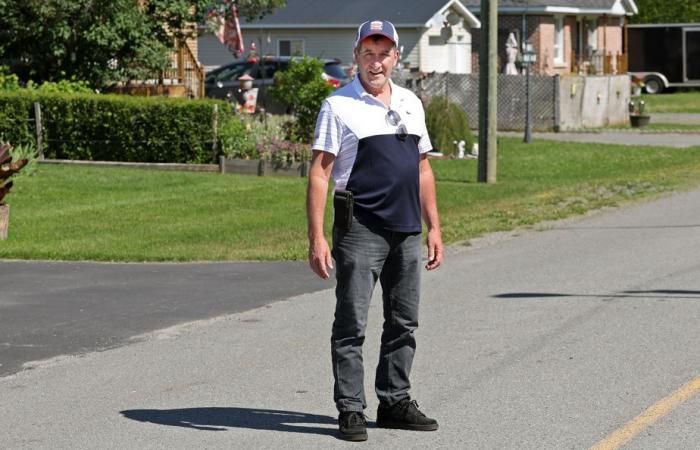Residents of Sainte-Cécile-de-Milton deplore the fact that a meeting on perfluorinated chemicals was only announced with 48 hours’ notice on Monday. And that it will not be recorded, at the request of the Public Health Department (DSP).
Posted at 7:53 p.m.
For the past year, the DSP has been recommending limiting drinking water consumption in the small municipality north of Granby, a first in Quebec. Sainte-Cécile-de-Milton does not have a water distribution network – each building is supplied by a well.
Eve Nault, a young mother from Sainte-Cécile-de-Milton, deplores the fact that the population was only informed 48 hours in advance of the meeting with the DSP on Wednesday evening. She also deplores, like others on a Facebook page of citizens of this Estrie village, that Public Health does not want the meeting to be recorded.
“It’s been a year since we stopped drinking water from our well, and at my sons’ CPE, the children can’t drink water from the well either,” says M.me Nault. This worries us a lot. »
The students of Sainte-Cécile primary school do not drink water either, and the DSP makes the same suggestion for pregnant women, those who want to become pregnant and babies under 1 year old everywhere in the village of 2000 souls.
The mayor of Sainte-Cécile-de-Milton, Paul Sarrazin, explains that the decision to hold a meeting was taken last Thursday, because of responses to requests for access to information from the DSP which were on the verge of to be sent. “We want our population to be informed first. »
As for the absence of recording, it can be explained by the fact that in the past, portions of recordings of DSP presentations were cited out of context, according to Mr. Sarrazin.
The CIUSSS de l’Estrie led The Press towards Mr. Sarrazin for the question of the short notice on the meeting on Wednesday evening.
Help with testing
The approximately 70 residents whose wells were tested last summer were notified personally first, which explains the general announcement only on Monday, Mr. Sarrazin said. Around thirty other wells had been tested in 2023. All these tests were paid for by the municipality, and Mr. Sarrazin asked, without success, the provincial Ministry of the Environment to help him assume these costs. A nearby landfill could be linked to perfluorinated chemicals.
The current Canadian standards for perfluorochemicals – dating from 2018 – are considered very high. However, a new standard was proposed in 2023, which would lower this limit by a factor of 10, to 30 nanograms per liter (ng/L). And a 2023 report from the National Institute of Public Health of Quebec (INSPQ) suggested even lower limits.
Learn more
-
- 4 nanograms/liter
- Thresholds for perfluorinated PFOS and PFOA which must not be exceeded for children under 1 year of age and pregnant women, or planning to be pregnant
Source : INSPQ
- 7.35 ng/L
- PFOA levels in the Sainte-Cécile school well
Source: DSP of the CIUSSS de l’Estrie
-
- 9.5 ng/L
- PFOS levels in the Sainte-Cécile school well
Source: DSP of the CIUSSS de l’Estrie






